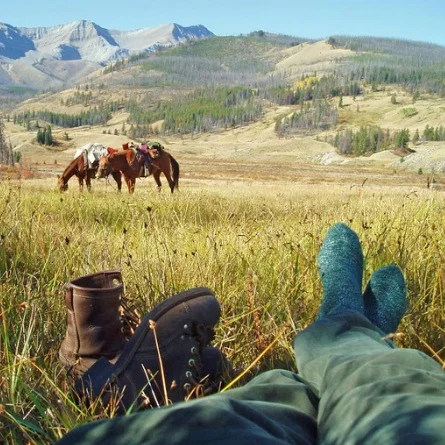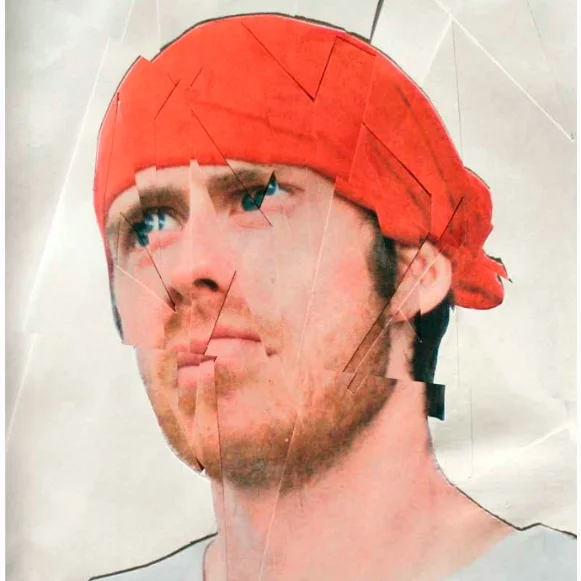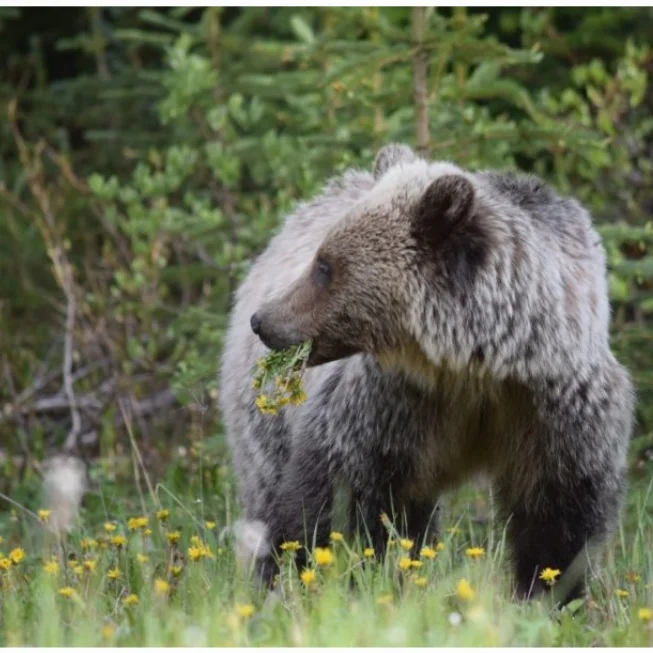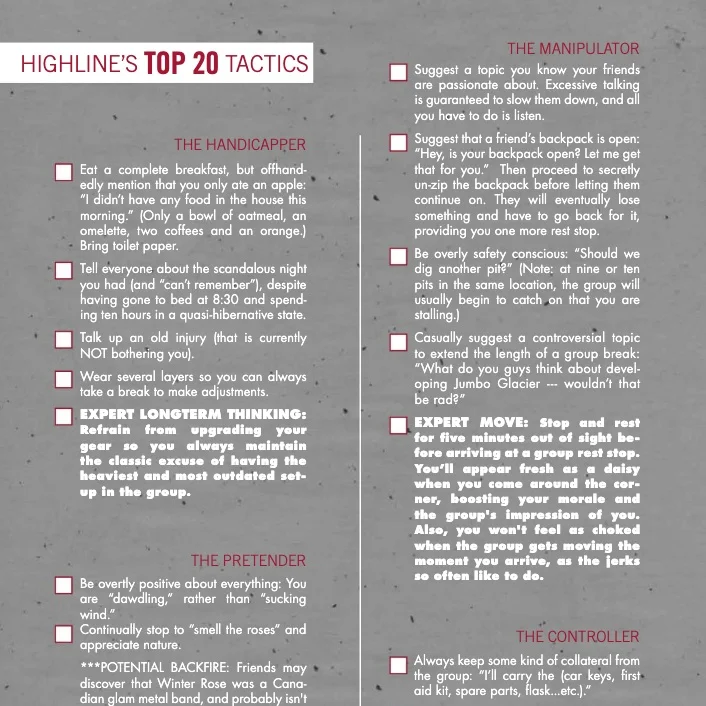High Times: The Adventures of Jim Davies
Story by Chic Scott. Photos: submitted.
Highline Magazine, Winter 2010/11 edition.
Jim at the controls of a fully-loaded 47G-3 B1 helicopter. Photo courtesy of Chic Scott.
If you run into Jim Davies at the post office or on the streets of Banff, you will never suspect that he has had one of the most exciting and adventurous lives in the Bow Valley. Quiet, calm and watchful, Jim keeps to himself and lets the others get the fame and the attention. But as the pioneer pilot of the heli-ski industry, and as the first mountain rescue pilot in the National Parks, he has made a huge contribution to our mountain community and has earned the respect of everyone.
Jim was born in Banff on January 30, 1938. His father, Bert Davies, was a park warden, out on patrol at the time while his wife, Lila, was keeping the home fires burning in their house in the 100 block of Muskrat Street. Jim learned to ski on the slopes of Mount Norquay and Sunshine Village with school chums like George Capel, Ian Neilson and Jerry Johnston. And Jim was a hot skier. When he was 17, at the Western Canadian Ski Championships at Grouse Mountain near Vancouver, he won three gold medals and would have won a fourth if not for some spectators who were walking across the downhill course just as he approached, forcing him to come to “a complete stop.” However, he still managed to win the silver medal in this race.
Photo courtesy of Jim Davies.Photo courtesy of Jim Davies.
After completing high school, Jim went to Europe in the autumn of 1956 to ski. He and a friend, John Derrick, lived in the staff quarters of the Molitor ski boot factory in Wengen, Switzerland, and skied beneath the stunning Oberland summits—Eiger, Mönch and Jungfrau. That winter Jim raced in the world famous Lauberhorn downhill, against such greats as Toni Sailer, and came in 18th out of a field of 50 competitors.
EARLY DAYS OF FLIGHT
Back in Canada that autumn, Jim enrolled in a four-year commercial art program at the Southern Alberta Institute of Technology. Later, in May 1959, he started flying with the Calgary Flying Club, and, by August, he had his private pilot’s license. The lure of winged adventure was too strong, and Jim quit the art program to pursue life as a pilot.
Hans Gmoser (left) and Jim Davies in front of Jim’s Piper Cub aircraft in 1960. Photo by Bruno Engler.
Hans Gmoser was the leading ski mountaineer at the time in the Canadian Rockies, and he enlisted Jim’s help in one of his great adventures. Hans planned to ski along the icefields of the Continental Divide from Kicking Horse Pass to Jasper, and he needed Jim to scout the route and place food caches. In February of 1960, in Jim’s Piper Super Cub aircraft, the pair flew the route on several occasions, dropping food parcels from a bomb rack that Jim had installed beneath the plane. Then, in April, Hans and five companions attempted to ski the 300-kilometre route with Jim keeping a watchful eye on their progress from above. Although the group only managed to ski half the route—as far as the Columbia Icefield—this was the start of a lifetime friendship between Jim and Gmoser.
PIONEERING FLIGHT IN THE ROCKIES
Over the next few years, Jim flew often for Gmoser. In 1962, from his Aeronca Sedan plane, he made food drops for Gmoser’s ski camp in the Little Yoho Valley. He would take the seats out and load the plane with bundles of food, then fly from Banff to Sherbrooke Lake where he would land, remove the plane’s door, then fly over Gmoser’s group at the Stanley Mitchell Hut, pushing the bundles out the door.
In 1960 and ’61, Jim transported food for Ray Legace to Skoki Lodge. On one occasion he dropped seven cases of beer, breaking only one bottle in the process, having stuffed them in a sack, each wrapped individually in newspaper. Jim also flew to Mount Assiniboine Lodge, making 64 flights in 1962. He even landed right on top of Cave Mountain in his Super Cub.
Jim pioneered the art of landing his little aircraft on glaciers. In 1962 he landed his Cessna 180 aircraft on the Canoe Glacier in the Cariboo Mountains of BC, transporting a group of skiers—including Nancy Greene and her twin sister Elizabeth—for one of Gmoser’s adventures. They camped on the glacier for nine days and skied Mount Sir Wilfred Laurier; it was on this occasion that Jim McConkey made his famous jump, on skis, over Davies’ aircraft.
ENTER THE HELICOPTER
In November 1961, Jim began his training as a helicopter pilot. He flew one of the first heli-ski adventures in the spring of 1963. With Gmoser, he transported a group of skiers to the Canoe Glacier in the Cariboo Mountains. But it was in the Bugaboos, in April of 1965, that heli-skiing came together. For two weeks, Jim flew Gmoser and his guests to the top of the runs, and, together, they gave birth to an industry.
Photo courtesy Jim Davies.
All the stars aligned to create the sport of heli-skiing. The Bugaboo Range of mountains had deep snow, long runs, spectacular scenery and was not part of a national or provincial park. Gmoser was the perfect ski guide, and Jim was the perfect pilot. Perhaps most importantly, the helicopter technology necessary to the success of heli-skiing was just being developed. By the end of the 1969 season, he was flying a 10-passenger Bell 204, and heli-skiing literally took off.
Jim flew for Gmoser at Bugaboo lodge for eight years. It was a risky job flying high in the mountains in marginal weather conditions, and it was Jim who worked out the techniques required to do the job safely. Of course, there were close calls like the time when three pairs of skis went through the rotors.
During the summers, Jim flew for a variety of operations including The Alpine Club of Canada’s Yukon Alpine Centennial Camp in 1967. At the end of the camp, with Gmoser and Judy Norman on board, he landed his machine on the summit of Mount Lucania at 5,226 metres.
In June 1971, Jim began training with the Parks Canada mountain rescue team with a rescuer hanging from a long sling beneath the machine. Only two months later, on August 6, working with Peter Fuhrman, he successfully completed the first helicopter sling rescue in the park, plucking an injured climber from Mount Edith. Jim recently recalled that, during that first summer, the team saved seven lives using this new rescue technique.
PERSONAL LIFE
In 1973, Jim left the heli-ski business, bought his own machine, a Bell 206B Jet Ranger, and set up business in Banff. Flying up to 800 hours per year, he had the machine paid off in five years.
In 1965, Jim married Siri Strom, daughter of ski pioneer Erling Strom, and, later that year, their son, Morgan, was born. Jim and Siri divorced in 1967, and Jim married for a second time in March 1970 to Sue Corless who was working as a researcher at the Whyte Museum of the Canadian Rockies. Sadly, after 37 years together exploring the mountains, Sue died of cancer on March 27, 2007.
Over the years Jim has received many awards: the Robert E. Trimble Memorial Award “for distinguished performance in helicopter flying” (1976); the Alberta Achievement Award (1981); the Bill March Summit of Excellence Award at the Banff Mountain Film Festival (1988).
Jim retired in 1990 after 33 years in the air. He said that the job had become repetitive, even boring, adding that it’s a young man’s job. A superb watercolour painter, Jim has now returned to his art. In the mornings, he can be spotted walking near Whisky Creek with his 14-year-old dog, Smokie. He says that some winter he will join me for a cross-country ski tour. I look forward to gliding along the trail and swapping tales with him in our beautiful snow covered mountains.











